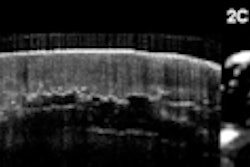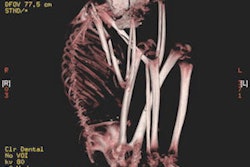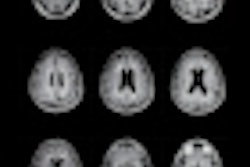Research conducted at Guy's and St Thomas' NHS Foundation Trust in London has shown that optical coherence tomography (OCT) can be used for assessing the depth -- and therefore the degree of malignancy -- of the most common type of skin cancer, according to OCT manufacturer Michelson Diagnostics.
The research, published online on June 28 in Skin Research and Technology, was performed in a collaboration between the medical physics group and clinicians from St. John's Institute of Dermatology at Guy's and St. Thomas', using a Michelson Diagnostics VivoSight OCT scanner.
Lead researcher Dr. Andrew Coleman and colleagues scanned a total of 78 patients. The team then correlated the OCT images with pathology from biopsies of the patients' lesions. Coleman's group found that the depth of superficial basal cell carcinoma lesions less than 1-mm thick can be measured accurately using OCT, and that OCT imaging has clinical value in identifying the presence of "peripheral cell palisading," a key diagnostic indicator, in basal cell carcinoma lesions.
OCT provides real-time images of subsurface skin tissue at higher resolution than is possible with ultrasound or other standard imaging modalities, by using a low-power laser scanning device, Michelson Diagnostics said. VivoSight has CE Mark and U.S. Food and Drug Administration clearance for medical use in Europe and the U.S., respectively.



















